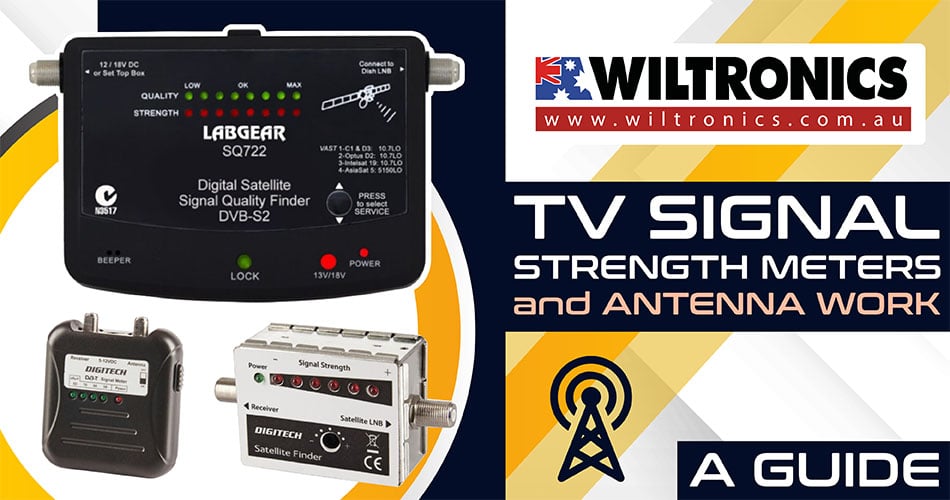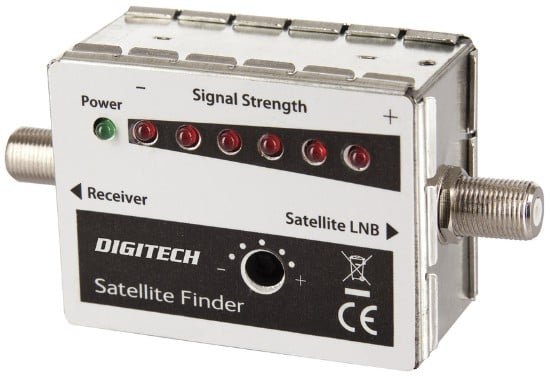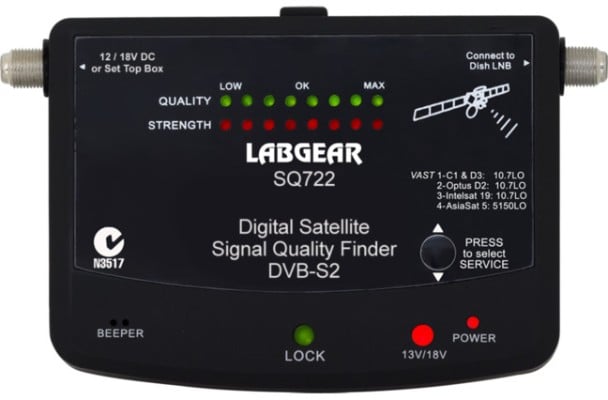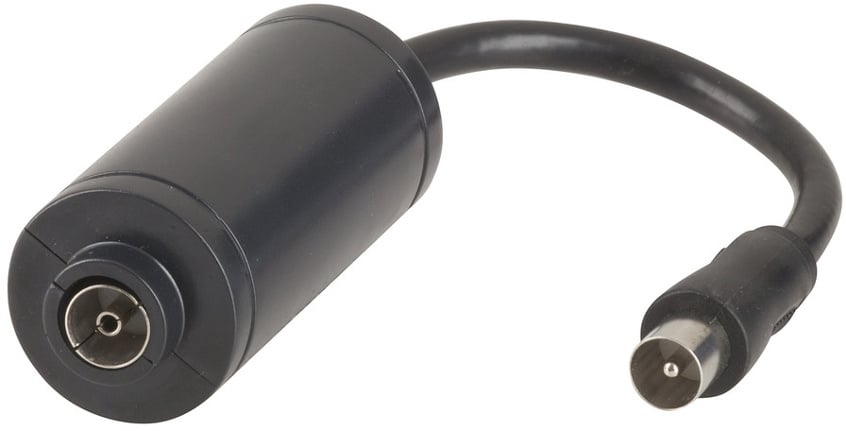Using a TV Signal Strength Meter for Antenna Work: A Guide
September 23, 2022

With a TV signal strength meter, there’s no more trips to your roof to get that perfect picture!
Finding the best reception for an outdoor antenna can be a mix of science and art. But there are two ways to go about it:
One in a traditional way. Using a compass and a dedicated app to point the antenna in the direction of the broadcast towers.
The other is a modern approach with an over-the-air TV signal strength meter. The latter will ensure you are receiving the strongest signal.
But how does it work? In case you are interested in using one, below are the basics and some important things to keep in mind.
Defining TV Signal Strength Meter
Have you ever hired someone to put an antenna on your roof? If so, you may have seen them taking out a digital device and checking the numbers while adjusting the aerial.
That tool is likely to be a TV signal strength meter. It measures the relative strength of radio frequency waves travelling through the air.
Moreover, it is a small portable unit plugged in line with the OTA (over-the-air) antenna. Using one allows you to find the direction of the strongest broadcast signals.
Not only does it come in handy for indoor use but also in the great outdoors, such as in motorhomes. If you have a directional OTA TV antenna installed in your motorhome, you can easily redirect the antenna toward the signals.
You can take advantage of the strength and performance of directional OTA antennas. All this without the hassle of manually finding where optimal signal reception is.
How does it work? First, ensure your TV signal strength meter is well-connected with your outdoor aerial. Then, position the antenna until the LED lights are lit on the meter. This indicates the strongest signal.
What Is a Good TV Signal Strength?
As a general rule, a good signal can be received at approximately 50km away from a broadcasting tower. If you live in a poor reception area, you may have to install your antenna on a higher mast.
Or, if you have multiple FTA (free-to-air) TV points, you may need to add an amplifier to your antenna system. This post about the ‘TV Signal Booster’ explained how a TV amplifier works, so check it out!
Either that first trick or the amplifier will help achieve an acceptable signal level. Eventually, improving your viewing experience.
But if you live too close to the tower, an attenuator may be needed to reduce the incoming signal. A strong signal is often a plus, but a signal that is too high can cause pixelation or burn out your tuner. Thus, the need for a device like an attenuator.
Generally, good signal strength is between 60 to 65dB (decibels).
Signal Strength Measurements
Decibel (dB) is the most important unit of measurement when looking at signal strength. It represents the ratio of two signal levels.
Further, it is the basic unit used for radio frequency (RF) power measurement. dB measurements are used because signal strengths vary logarithmically, not linearly.
A logarithmic scale allows simple numbers to represent large variations in signal levels. This comes in very handy in calculating system gains and losses.
Besides Decibel, there are other measurable units that are worth noting, and these are:
- Modulation Error Ratio (MER)
- Bit Error Rate (BER)
The MER is a widely used measure of signal quality. It regards the sum of all interference effects occurring on the transmission channel. For good TV reception, the preferred MER is at least 25 dB.
The BER, in contrast, is the percentage of bit errors of all transmitted bits. This includes interference, noise, bit synchronisation errors, or distortion.
Maximise the signal strength and minimise modulation error and bit error. The result? The best viewing experience!
Situations where a TV signal strength meter is useful:
You will appreciate a TV signal strength meter, even more, when you switch to an OTA antenna. Another one: suppose you are always on the road and need to measure signal strength at several sites.
A strength meter is a perfect companion for you! Most are portable and lightweight and can even fit into your pockets.
Terminologies
Poor signals have certain qualities that are measurable using a TV signal meter. And you might run into specific terms when researching how to get the perfect signal.
Bit synchronisation errors
The signals are altered due to any or a combination of the errors below.
Carrier suppression
When the carrier level is reduced below what is required for extraction by the receiver.
Distortion
Unwanted alteration of the original characteristics of the signal waveform that carries information.
Interference
Modification of a signal in a disruptive way as it moves from the source to the receiver. For instance, adding an unwanted signal to a useful one.
Image response rejection ratio (IMRR)
A measure of a receiver’s performance. Plus, it rejects unwanted images mixed with the water signals.
Noise
An error or some undesirable electromagnetic interference. It mixes with a useful signal so that they are transmitted together.
Phase noise
The random fluctuations in the phases or timelines of a signal as it is being transmitted.
Signal path deviation
Reduces the signal’s power and density from the transmitter to the receiver.
Get Your TV Signal Strength Meter Here!

Satellite Signal Finder Meter with LED Display
Product code: JLS3302
Designed with a small compass for easier and quicker tuning. Perfect for setting up permanent dishes as well as portable systems on caravans or motorhomes.
Once connected to the satellite dish and the set-top box, the meter shows signal strength on the 6 LEDs. After it picks up a signal, use the adjustable sensitivity to fine-tune the angle and lock the signal.

Digital Vast Satellite Signal Finder SQ722
Product code: AN9722
A high-quality meter that is pre-programmed for multi satellites. Designed with a precise digital signal alignment to:
- Optus C1 / D3 for VAST, Pay TV
- Optus D2 for Religious channels
- Intelsat 19 for foreign PayTV
- AsiaSat 5 for RAI Italia (C Band)
It features improved indicator brightness and instant response to changes in the signal. The fast response makes alignment simple. Plus, the audible tone enables users to ‘hear’ the alignment.

4G LTE filter for Digital TV
Product code: JLT3062
If you are experiencing interruptions, this 4G LTE filter can solve your problem. It stops interference by clamping down on radio signals outside of the TV broadcast band.
The filter sits in line with the antenna cable. It won’t affect LTE reception for nearby phones and tablets.
Round-up
Without a TV signal strength meter, it will be a challenge to tell if you are getting perfect reception. For one, TV signals are invisible, so a signal meter is helpful in quantifying what is going on.
Such a device is worthy of investment if you want to save time trying to figure out how to position your antenna. With one, you can adjust your television antenna for the best reception. At the same time, locate the strongest level while aligning the aerial.
© Wiltronics Research Pty Ltd 2022
Write a Comment
You must be logged in to post a comment.